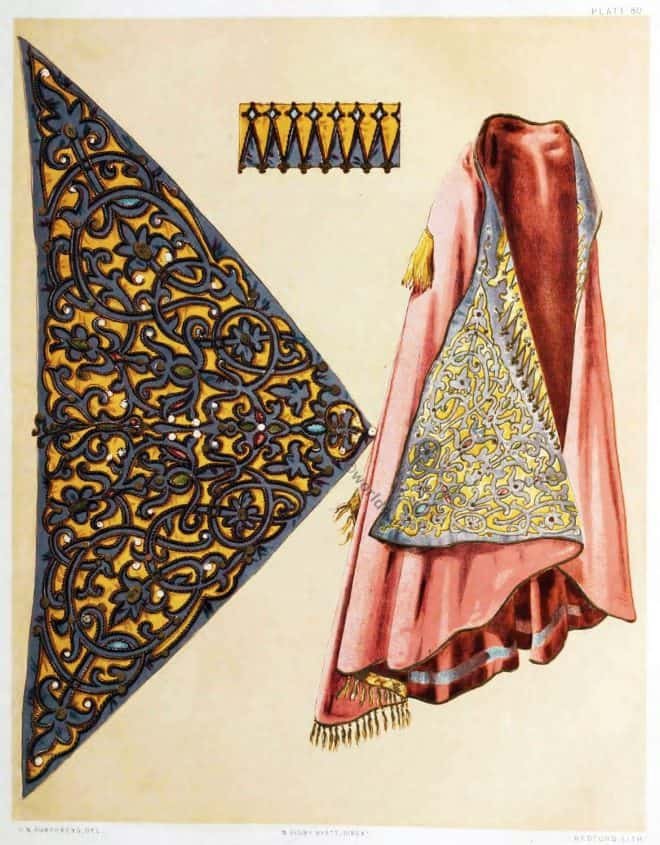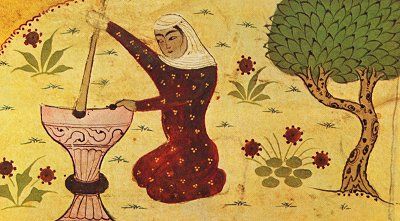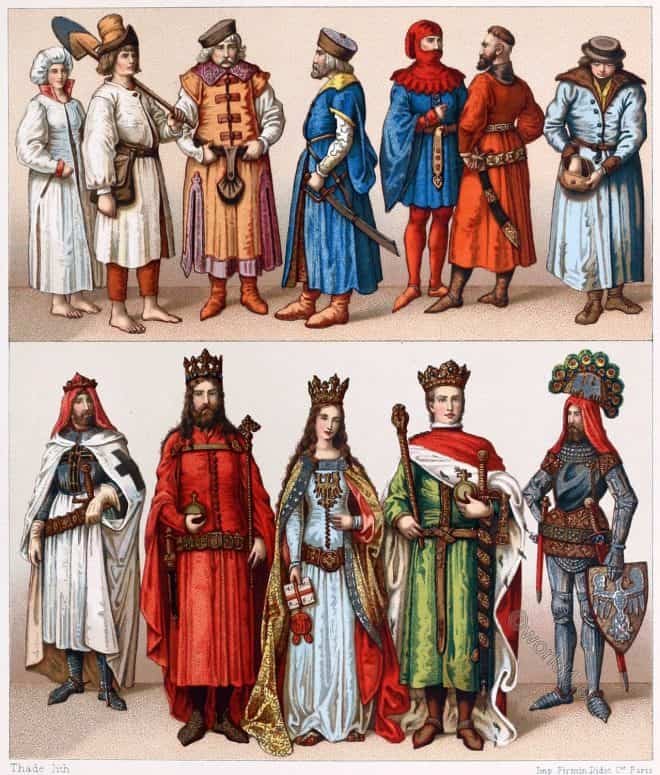This interesting and valuable rug is of antique Tabriz weave, of finely blended colors and rare design.
Category: Genre
Byzantine dalmatica. Albanian embroidery. 12th century.
Chasuble. Liturgical vestment. Albanian embroidery on a twelfth-century Byzantine dalmatica.
View of Jaffa, looking north, 1843 by David Roberts.
Besides its authentic history, Jaffa figures in a strange mixture of Hebrew and Heathen tradition.
The ancient Greek city of Posidonia or Paestum in Magna Graecia.
Percy Bysshe Shelley in Italy. Temple of Neptune at Paestum. Letter from Naples. The Year 1818.
An embroidered mantle with a cape of very fine point d’Alençon.
A lace worked dress, in circular shape, furnished with a lace cape reaching to the top of the embroidery, of very fine point d’Alençon.
Russian Women’s, Boyars, Cossacks and Nobility costumes.
Russia 16th and 19th century. Historical persons and folk costumes.
Women Mystics of the Dervish Orders. Female muslim Sufi saints.
Women Mystics by Lucy Mary Jane Garnett. Sisterhood of Mystics. Female muslim Sufi saints. The holy women of the Dervish Orders.
Polish Costumes in the Middle Ages. Typical and historical figures.
Clothing in Poland in the 14th and 15th centuries. Typical and historical figures.
France. Historical folk costumes from the Bordeaux area.
France Bordeaux. Folk costumes from Gradignan, Caudéran, Pessac, Laroque, Blaye. First half of the 19th century.
The Vatican. St Damaso with the loggias of Bramante and Raphael.
The beautiful Loggias, or open corridors, rise in three stories one above the other, each exhibiting towards the East, towards the North, and towards the West.










